The material of a keyboard plate directly influences how your keyboard sounds and feels. Whether you're after a louder, crisp tone or a softer, cushioned typing experience, the plate material plays a key role. Here’s a quick breakdown:
- Stiff vs. Flexible Plates: Stiff materials (like aluminum or brass) provide a sharper, more responsive feel, while flexible options (like polycarbonate or POM) offer softer feedback.
- Sound Profile: Some materials amplify resonance for a pronounced sound, while others dampen it for quieter typing.
- Comfort: Flexible plates may reduce typing fatigue during long sessions, while stiff plates offer a solid, tactile experience.
Common materials include: aluminum, polycarbonate, brass, steel, POM, and FR4. Each has unique characteristics that shape your typing experience. To find the right fit, experiment with different options to match your preferences for sound and feel.
Common Plate Materials and Properties
Popular Plate Materials
When browsing through product listings on KeebsForAll, you'll often come across plates made from materials like aluminum, polycarbonate (PC), brass, steel, POM, and FR4. However, these listings rarely dive into the technical details of how each material affects performance. Instead, many keyboard enthusiasts rely on shared community knowledge and personal experience to guide their choices. Let’s break down some of the key factors that influence these decisions.
Key Properties of Each Material
Technical specifications such as stiffness, density, and acoustic qualities are not commonly highlighted in product descriptions. Instead, keyboard hobbyists tend to focus on practical aspects like durability, weight, and sound dampening when selecting a plate material. These factors play a significant role in shaping the overall typing experience and sound profile of a keyboard.
Plate Material Comparison
In the absence of detailed technical data, comparing plate materials often boils down to personal testing and preference. The best way to find the right fit is to experiment with a variety of materials. This hands-on approach allows you to discover which combination of sound and typing feel aligns with your unique preferences. After all, the "perfect" plate material is highly subjective and varies from person to person.
Every Keyboard PLATES Sound Comparison | Which one sounds the best?
How Materials Shape Sound and Typing Feel
The choice of plate material in a keyboard isn't just about aesthetics - it's a key factor that shapes how a keyboard feels and sounds. While much of this comes down to personal preference, certain trends emerge when comparing stiff and flexible plates, as well as how materials handle resonance and comfort.
Stiff vs. Flexible Plates
Keyboard enthusiasts often divide plate materials into two camps: stiff and flexible. Stiff plates deliver a more immediate, crisp response with every keystroke. On the other hand, flexible plates tend to absorb some of the force, offering a softer, more cushioned typing experience. That said, the overall keyboard design and an individual's typing habits can influence how these differences are perceived.
Resonance and Vibration Effects
Every keypress generates vibrations, and the plate material plays a big role in how those vibrations are handled. Some materials amplify resonance, creating a more pronounced sound profile, while others dampen it for a quieter experience. These differences in sound and vibration are subtle and often come down to personal perception - what one person finds satisfying, another might not.
Comfort and Typing Fatigue
The plate material can also impact long-term typing comfort. Softer, more flexible plates may help reduce the strain of extended typing sessions by cushioning the impact of each keystroke. Conversely, stiffer plates provide a more solid, responsive feel that some typists find energizing. Ultimately, comfort is subjective, and experimenting with different materials is the best way to find what works for you.
sbb-itb-3cb9615
How to Choose the Right Plate Material
Selecting the right plate material comes down to your personal preferences and how you plan to use it. Each material offers a distinct sound and feel, so understanding these differences can help you make an informed choice.
Focus on Sound
The sound of your keyboard can vary significantly depending on the plate material. Some materials enhance resonance, creating a louder, more vibrant tone, while others dampen noise for a quieter experience. If you're unsure, try experimenting with different options to find the sound that suits you best.
Consider the Feel
The plate material also impacts how your keyboard feels during use. Whether you're typing for hours or gaming, the right plate can make a big difference in comfort and responsiveness. Test a few materials to see which one provides the firmness and feedback you prefer.
Explore Options at KeebsForAll

KeebsForAll offers a variety of kits and components to help you customize your keyboard. Options like the Freebird TKL, Freebird60, and Freebird75 feature CNC-machined aluminum cases and hot-swappable designs. You can also check out the Geon DailyLube Plate to refine your keyboard's sound and feel.
Finding Your Perfect Plate Material
The material of your keyboard plate plays a big role in shaping your typing experience. While there’s not a ton of technical data comparing materials, keyboard enthusiasts often agree that even small differences in plate material can subtly change how a keyboard feels and sounds. So, if you’re looking to fine-tune your setup, it’s worth paying attention to these details.
Key Points to Keep in Mind
The way plate materials affect sound and typing comfort can be subtle, but it’s worth exploring. Do you prefer a tactile feel or a quieter sound profile? Think about how your keyboard setup fits into your daily environment, whether it’s for work or gaming. This personal preference can guide your decision-making process.
Experiment with Different Materials
When it comes to finding the right plate material, experimenting is key. Everyone’s typing style is different, and what works for someone else might not work for you. Start with a setup that feels comfortable and see how it performs during your daily tasks. Pay attention to the sound, feel, and overall comfort as you type.
If you’re not sure where to start, consider trying a keyboard kit from KeebsForAll. These kits are designed with flexibility in mind, letting you test out different materials and layouts without committing to permanent changes. Whether you’re exploring a compact keyboard or a full-size design, you’ll get a better sense of how each build affects your experience.
Ultimately, trust your instincts as you experiment. Finding the right balance of sound, feel, and comfort is all about what works best for you.
FAQs
How can I decide between a stiff or flexible plate material for my keyboard?
Choosing the right plate material for your keyboard comes down to your typing style and the sound you’re aiming for. Stiff plates, like aluminum or brass, deliver a firmer typing feel and a sharper, more pronounced sound. In contrast, flexible plates, such as polycarbonate or FR4, provide a softer, cushioned typing experience with a quieter, more muted sound.
If you’re after a tactile, precise feel with a louder keypress, a stiff plate might suit you better. But if a quieter, more comfortable typing experience is what you’re looking for, a flexible plate could be the better choice. Trying out different materials is the best way to discover what complements your preferences.
How do aluminum and polycarbonate keyboard plates differ in sound and feel?
The material of your keyboard plate - whether aluminum or polycarbonate - plays a big role in shaping both the sound and feel of your mechanical keyboard.
Aluminum plates are known for their rigidity, offering a firm and consistent typing experience. They tend to produce a sharper, metallic sound that many describe as "crisp" or even "pingy." If you’re someone who enjoys a tactile, precise feel when typing, aluminum might be the way to go.
On the flip side, polycarbonate plates are more flexible, delivering a softer, cushioned typing experience. They create a deeper, more muted sound - often referred to as "thocky" - making them a favorite for those who prefer a quieter, more subdued typing profile.
In the end, the choice between these materials comes down to personal preference. Trying out both can help you discover which one aligns best with your ideal typing experience.
How do plate materials affect the sound and feel of a mechanical keyboard?
Plate materials are a key factor in determining the sound and typing experience of a mechanical keyboard. Options like aluminum, brass, polycarbonate, and carbon fiber each bring their own distinct characteristics. For instance, aluminum tends to offer a crisp and balanced sound, while polycarbonate leans toward a softer, more muted tone.
Trying out different plate materials gives you the chance to customize your keyboard to fit your typing style and sound preferences. Whether you enjoy a quieter, softer feel or a firmer, more pronounced sound, the choice of plate material can significantly impact your overall experience.


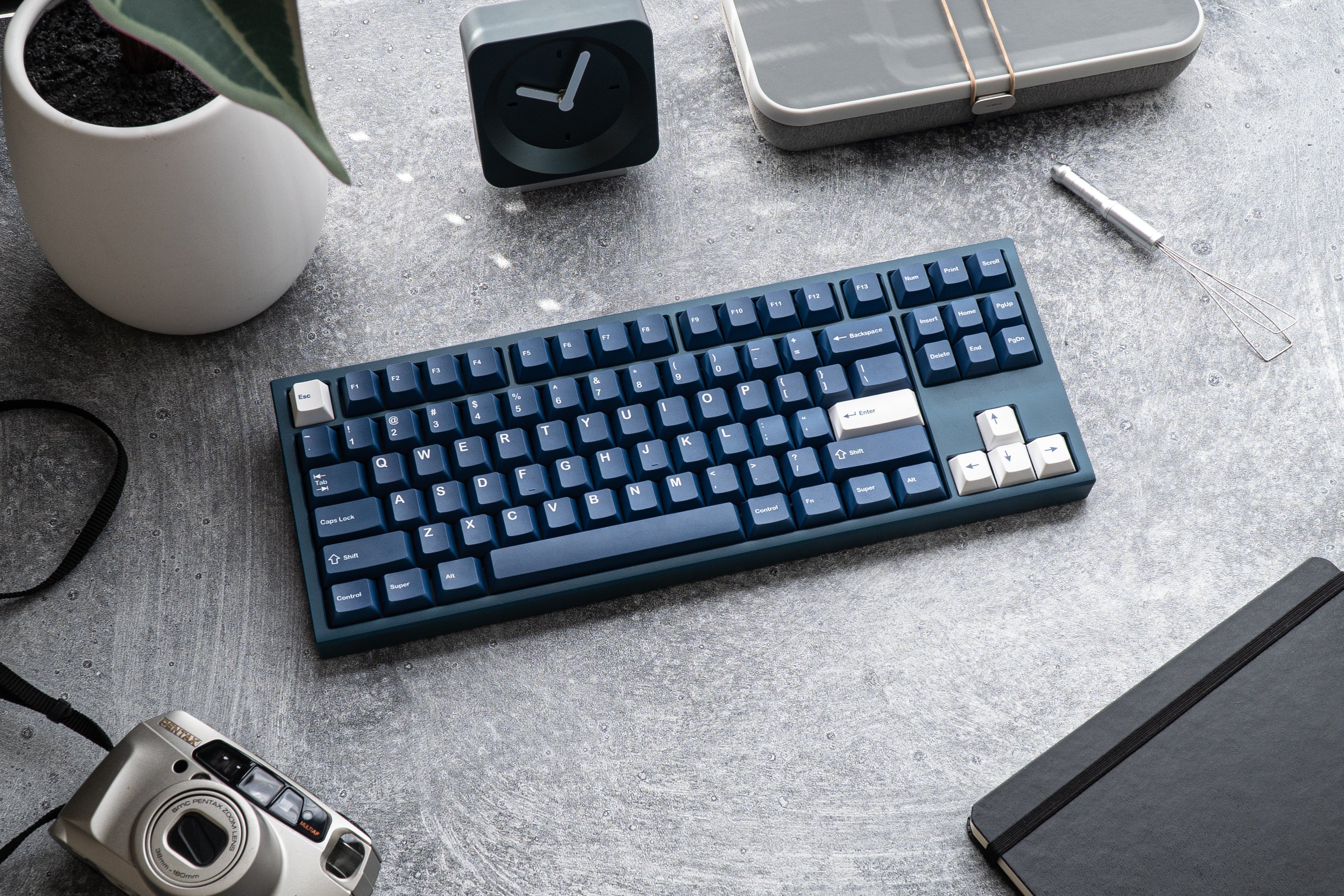
![[Pre-Order] Autumn Leaves PBT Keycaps - KeebsForAll](http://keebsforall.com/cdn/shop/products/DSC09732.jpg?v=1676148273)
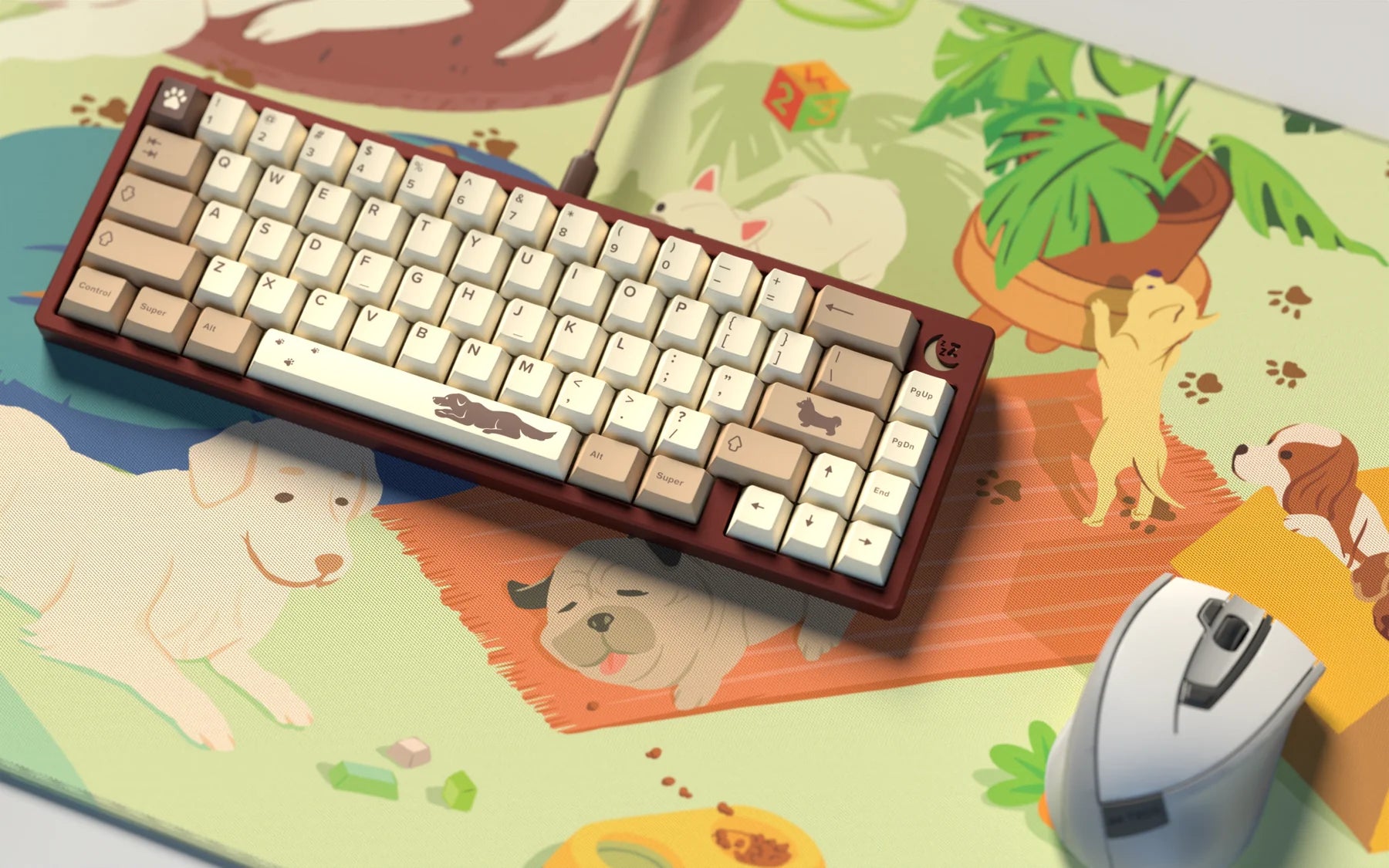

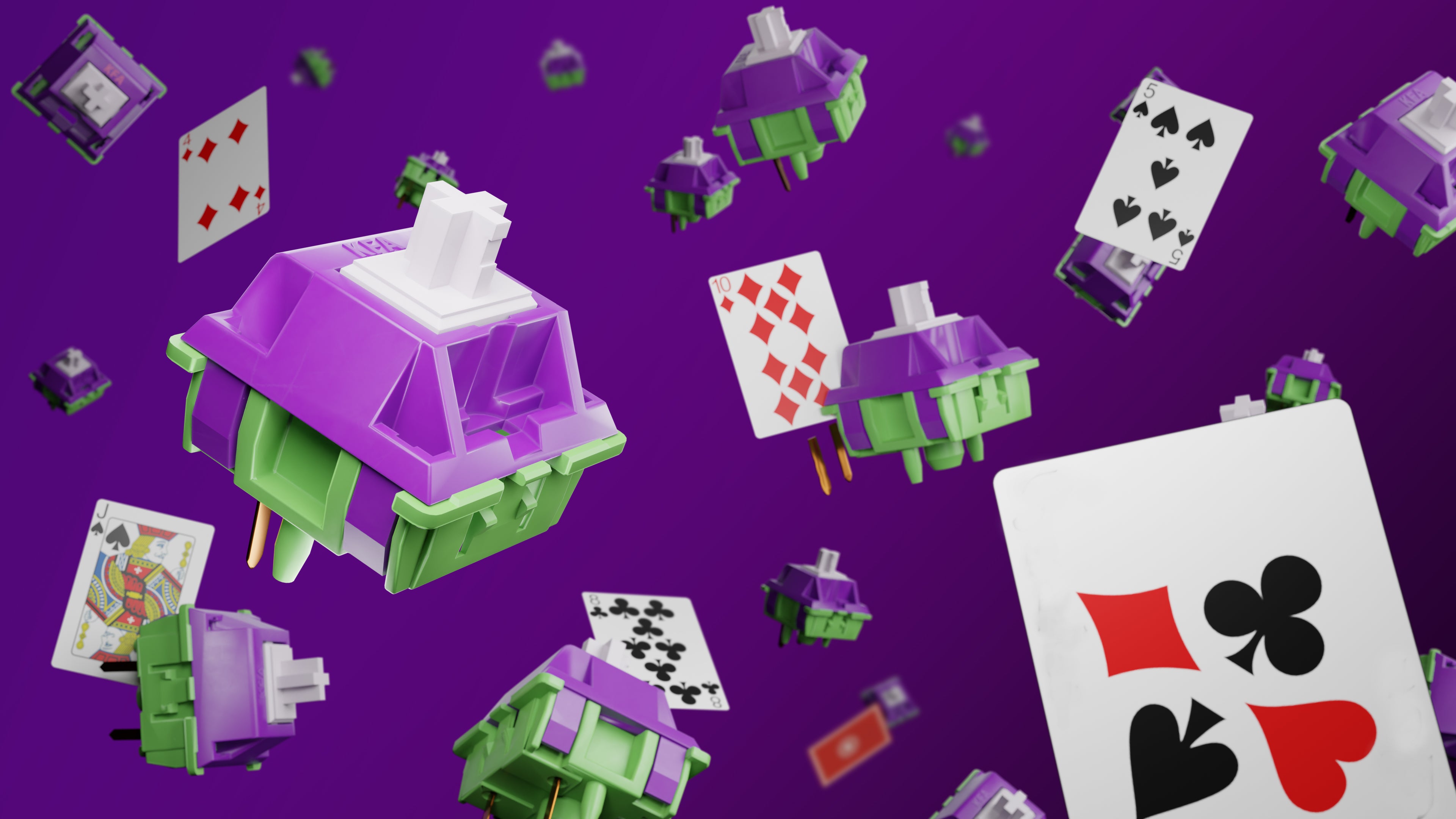
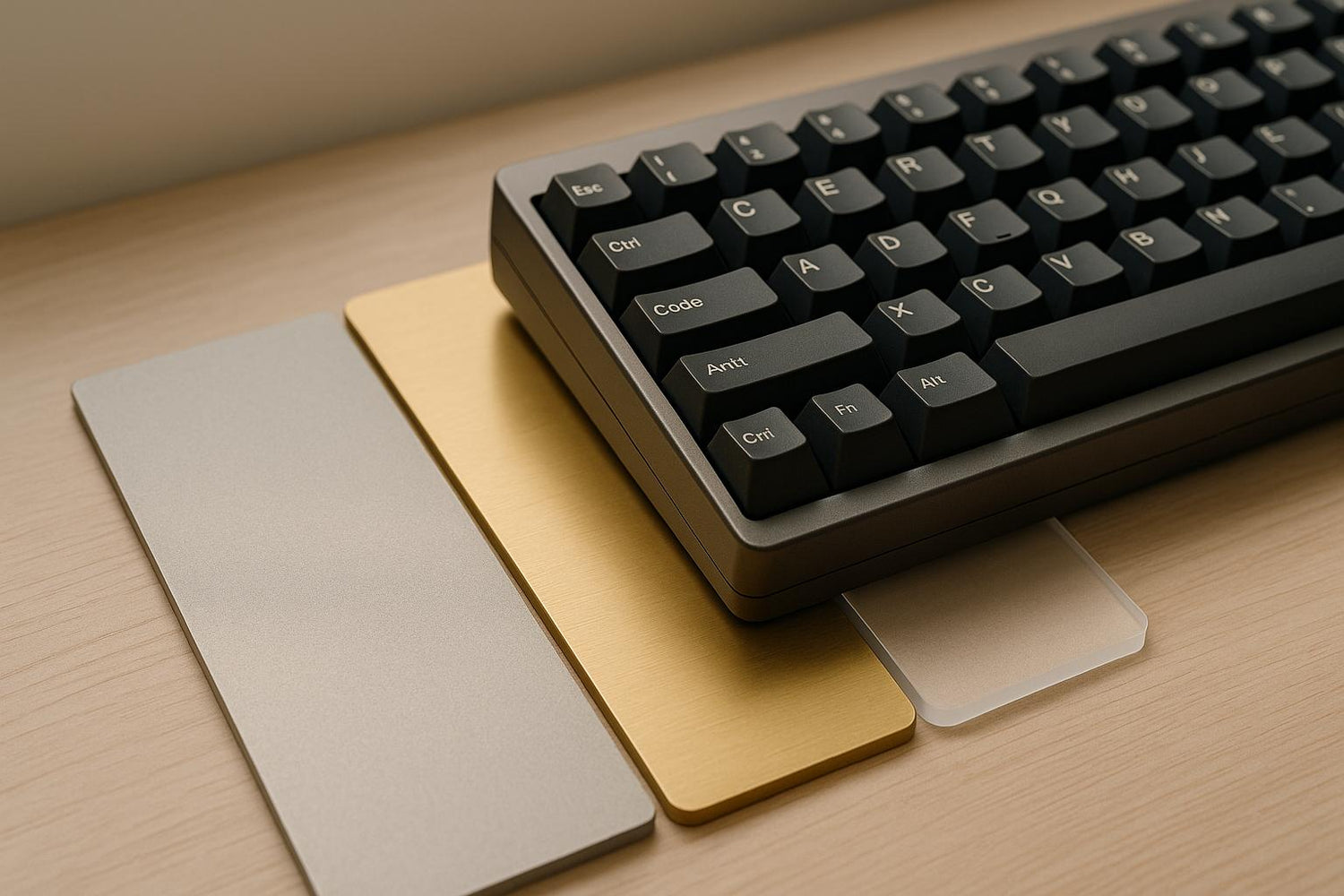
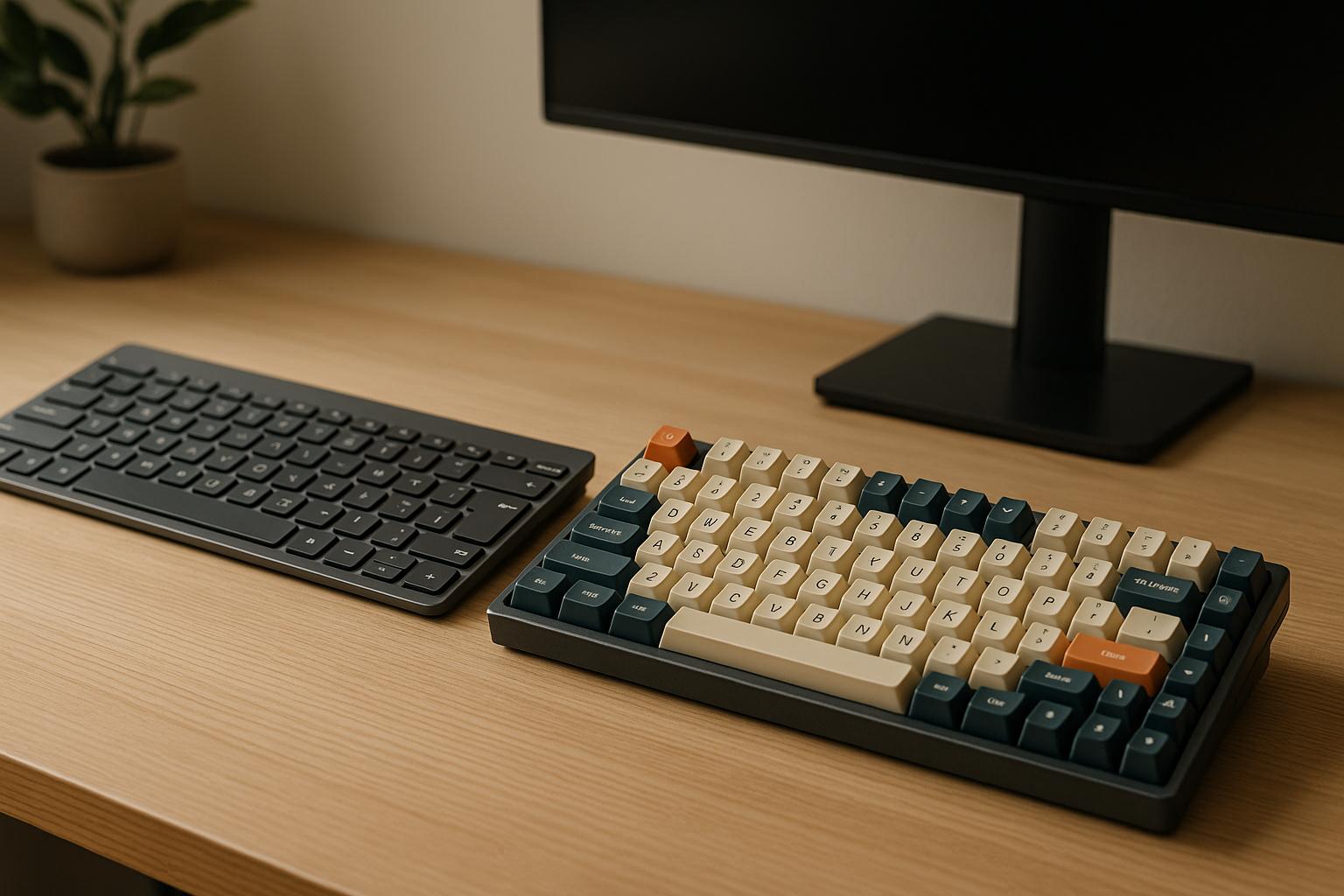
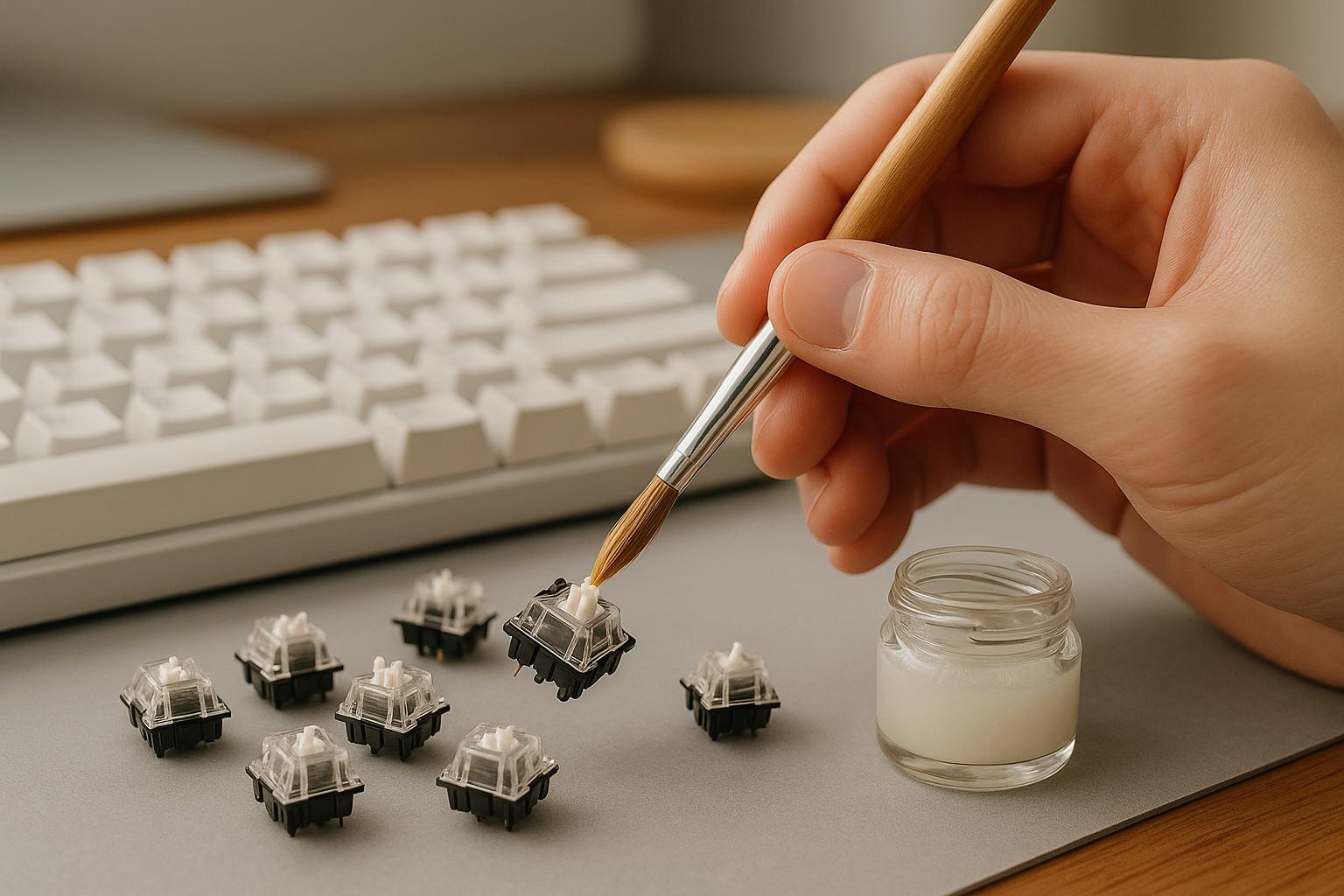
Leave a comment
This site is protected by hCaptcha and the hCaptcha Privacy Policy and Terms of Service apply.